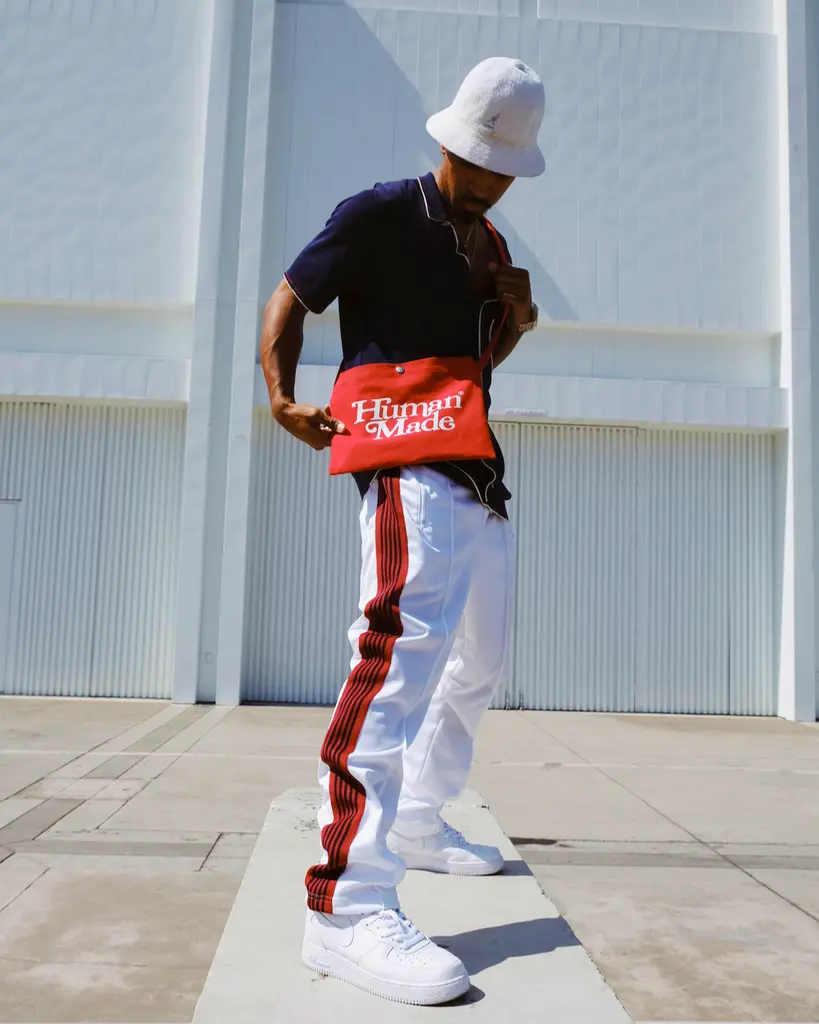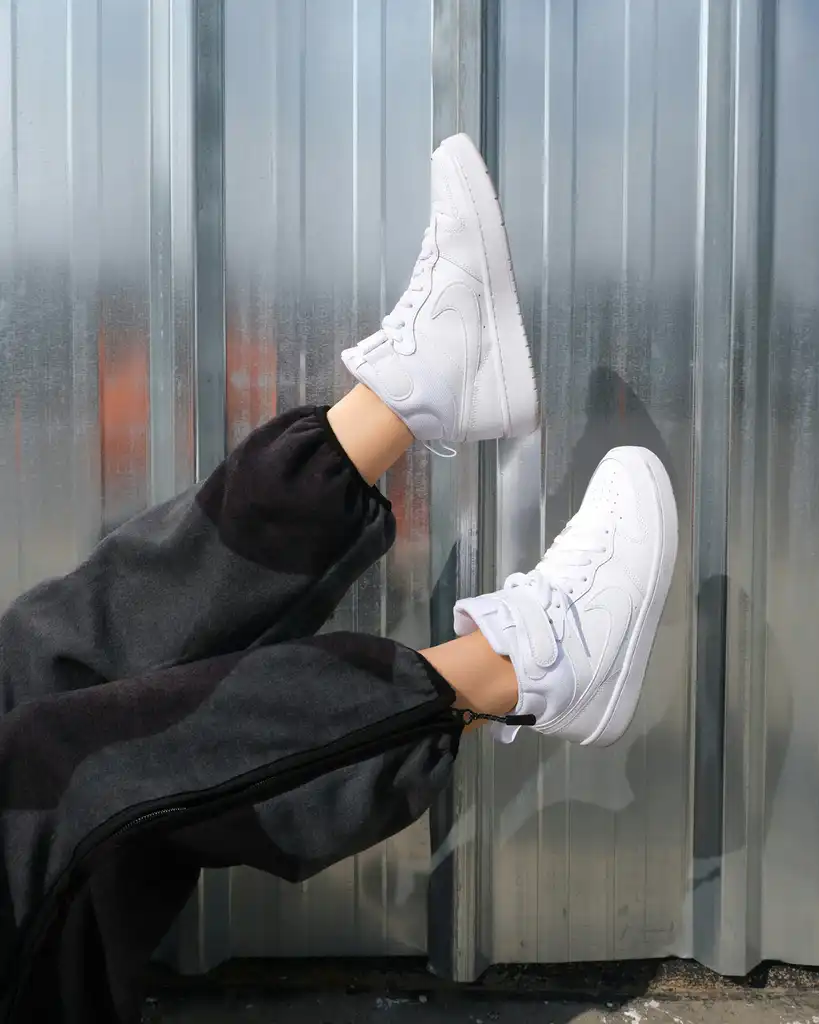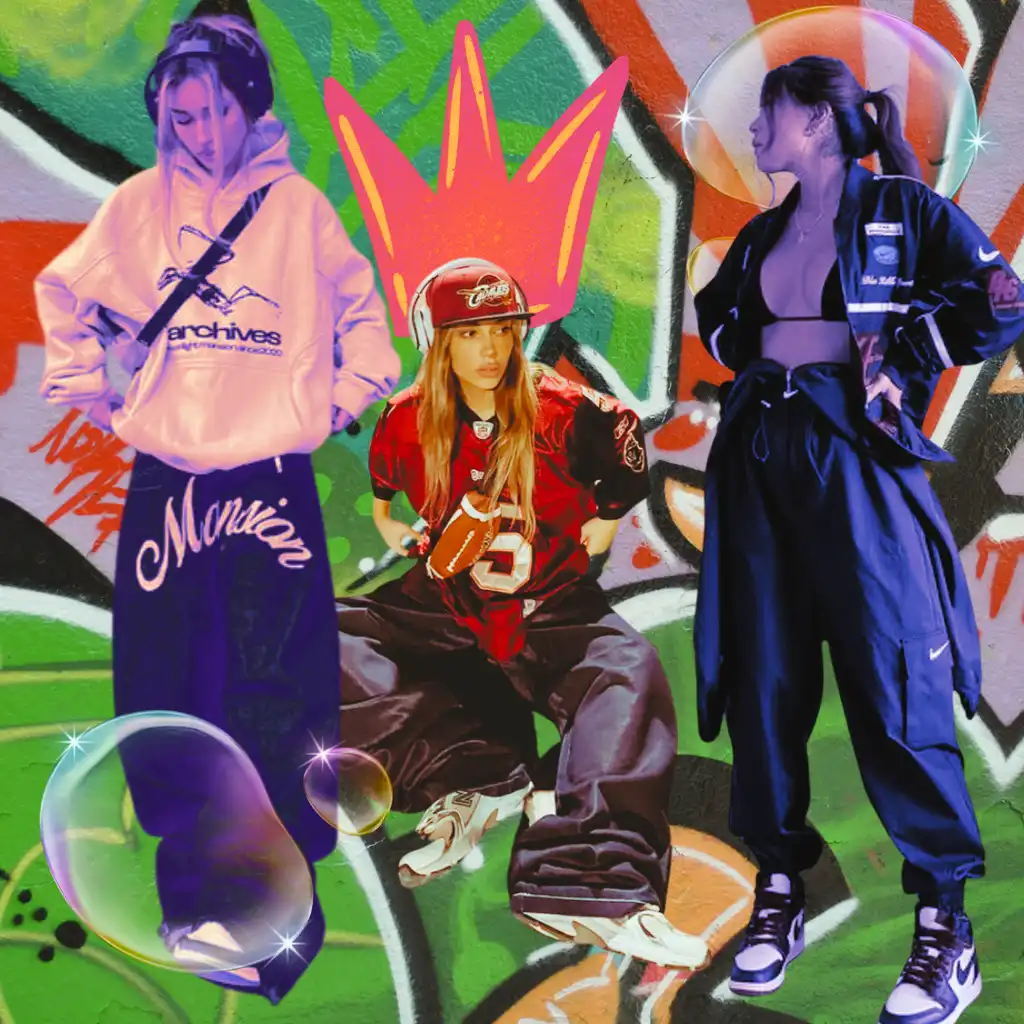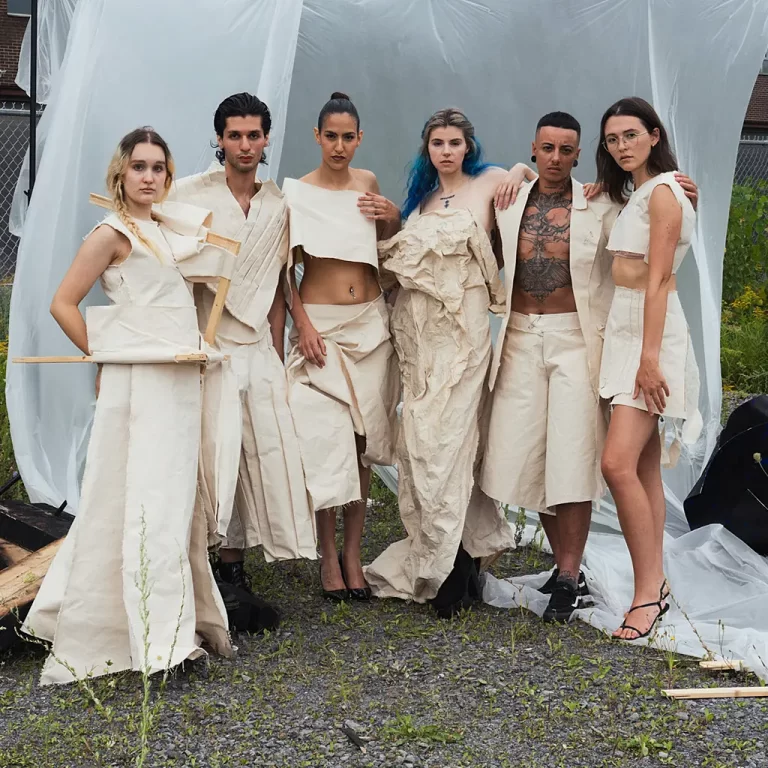Since the first hip-hop beats infiltrated the soundtrack of our collective lives, forty or so years ago in the late 1970s — yes, two generations back! — they also left a significant imprint on fashion by bringing casualness, comfort and active sportswear elements to the forefront of style.
It started with subcultures when streetwear emerged as an expression of urban youth in New York and Los Angeles where skateboarding, hip-hop and graffiti cultures were booming. “Surprisingly, Japan also emerged as a big influence of street style in the early 90s; one that is distinct from the American version we’re most familiar with, here in Canada,” explains Montreal designer Guillaum Chaigne who has made streetwear the signature style of his label for the discerning fashion cognoscenti, since mostly everything he produces is made with heart and skill by himself and a group of real humans he affectionately dubs his ‘chatons’ (‘kittens’) in his atelier. A method that is reminiscent of Denis Gagnon, our ‘enfant terrible’ of Quebec fashion.
It should also be noted that, at the time, these big cities were brimming with cheap lofts and studios, spaces that are notorious for attracting artists and, hence, transforming downtown areas into hotbeds of creativity where the art of the Basquiats and Harings of the world would blossom. Not something that’s easy to come by in today’s urban landscape where cut-throat real estate development and short-term leases are rampant, putting a stranglehold on affordable rentals. But that’s another story…

The Key Elements of Style
We’ve all seen caps and hoodies, right. But what are the key elements that define a proper streetwear outfit?
First of all, scale is important. So think oversize like the first generation of skaters who wore their jackets, jeans and T-shirts exceedingly large to be in tune with the rebellious spirit of skate parks, along the rhythmic beats of hip-hop. It’s basically about comfort meeting cool.
A step above the rest, sneakers are the cornerstone of streetwear. The type of shoe took off during the first wave of streetwear, in the 80s, because, well, skateboarding and break dancing. A decade later, sneakers became the highly collectible item they still are, and an entire culture was created around the athletic shoe with multiple styles and personalities.
The graphic tee is the voice of streetwear, the medium for artistic expression that speaks volumes without uttering a word. Bold, brash, and unapologetically loud, these wearable emblems tell stories of cultural milestones and personal manifestos.
If denim was the de facto textile to create rugged pants and jackets originally, streetwear has evolved to include highly technical fabrics like kevlar, nylons, microfibre, fleece, and even woolens. It’s more about the styles, fits and detailing than it is about strictly fabrics now.
But beyond the aesthetics, streetwear champions practicality like cargo pants, with pockets aplenty, and durable outerwear reflect the genre’s emphasis on utility, marrying form with function.
It should also be noted, according to Alexander Bergman, Assistant to Guillaum Chaigne, that “unlike most areas of fashion, streetwear is often size-inclusive, gender-neutral, and made or worn by people of colour. This allows for a wider audience of people to integrate themselves in the lifestyle, yet due to individual livelihoods one’s ‘style’ can be completely different to another, when presented together under the label of streetwear.”

The Medium Is the Message
What we are currently witnessing in fashion is a resurgence of a streetstyle that’s much more personalized, with an emphasis on writing on the garments and, of course, message T-shirts which are hotter than ever. “People are more likely to connect to the designers when they connect to the message on the clothing,” Guillaum reminds us. In his collections, the designer uses oversized graphic elements and words — that almost look like gigantic exclamation points — to give weight to his designs.
Alexander says it’s about “the rebellion that came about during the pandemic. That’s when we started noticing a lot of inequalities in society leading some to want to counter authority. And streetwear is really about that, too. It’s taking a political messaging for a collective goal. So these types of clothes are not just about style. They’re very political, with a strong meaning and message.” “That’s why people are reacting so positively to them right now. They want to be part of something that’s bigger than just fashion and fun,” emphasizes Guillaum.
As any observer of the fashion phenomena knows and understands intuitively, the clothing and accessories we wear are an extension of our current moods and personalities. There is nothing superficial or trivial about choosing certain items to show to the world who we are. Streetwear gave fringe subcultures that were not legitimized or recognized important tools to empower themselves and to touch others that felt ostracized with the view of “‘I am different and this is my way of doing things, of interpreting clothing.’ It’s obvious that in streetwear culture, people crave to show who they really are. It’s about putting yourself out there,” reminds us Alexander.
Interestingly, it has also been argued that oversized clothing and hoods are a psychological way of laying claim on more of the world when other material desires are not attainable. A compelling analogy when it comes to the provenance of streetwear and the meaning behind most of its key elements.
“I really believe streetwear is here to stay in the fashion world. I think it’s great that subcultures are being very successful at expressing their sense of style through a unique style of dress. As a designer who has become known for this style, of course, I feel validated when I see that. I’ve put a lot of love and passion into what I do, so it’s fulfilling,” says Guillaum.

The Spirit of Street Couture
Red carpet fashion has evolved over the years with streetwear and hip-hop’s influence ramifying and becoming increasingly the norm at big-ticket events worldwide, with hoodies replacing suits and T-shirts worn as gowns.
And at this year’s Met Gala there were two notable, and very important, fashion statements on the red carpet: Doja Cat’s white gown — no, actually, make that an oversized maxi-length see-through wet T-shirt (it was hair gel, we later learned) from Vetements.
Charli XCX arrived with a punk-inspired Marni gown that was entirely made from an assortment of vintage T-shirts from the 50s, 60s, and 70s patchworked together with hand-sewed rhinestones and glass beads; a reflection of Charli’s renegade style.
“The white T-shirt is something that can be reflective of so many things, so many fashion sensibilities, so many styles. It’s classic, punk, comfortable, sexy, casual all at once. It’s often people’s most prized item—you know when you find that one perfectly fitting, perfectly feeling white T-shirt that you never want to throw away? And as time goes on those T-shirts become more worn, softer, more desirable. We liked using this as a starting point for the dress,” Charli told Vogue US.
And who can resist the idea of selecting that most comfortable item of clothing for a chi-chi event? It’s like wearing your security blanket on the red carpet. Oh, and as a sharp contrast to this most streetwear-inspired gown, Charli wore an ultra-retro bullet bra. Talk about the clash of interesting references!
Does the future of streetwear involve crafting items that are closer to couture than industrialized fashion, in order to give that customized edge that only a fashion designer can create?
“I don’t see it becoming couture but I do see elements such as silhouettes and material practices being used on runways and events,” says Alexander.
In Guillaum Chaigne’s collections, each piece is made to order in Montreal, Canada. The alterations, prints and embroideries are all handmade at the designer’s atelier. The regular delay of production is from 3 to 10 business days. In other words, worlds away from fast fashion.
For Spring-Summer 2024, Guillaum has designed a spectacular long merino wool dress with mini punk slashes that would be perfect for a celebrity with a strong sense of style and personality to wear on the red carpet. Just add combat boots or mile-high heels, cherry coke hair, and you’re good to go. No accessories necessary. Or, maybe, yes, just a chain-mail minaudière.
“I think I’m in the right era because streetwear is becoming more and more fashion. It didn’t start out like that, but it’s changed along the way. A lot of people now see the couture side of streetwear. And for me it’s about integrating my style, my vision into these collections,” emphasizes Guillaum.
We couldn’t agree more and can’t wait to witness the next wave of streetwear come to life on more red carpets and prestige events!
Featured image collage: Yasmin Grothé
Photo 3
Dress: Guillaum Chaigne
Photo: Elizabeth Couture





